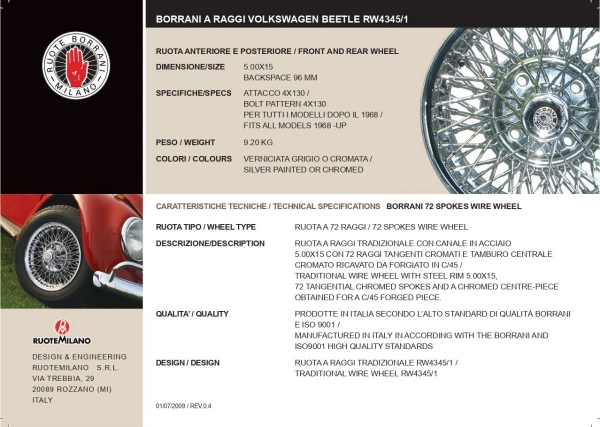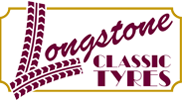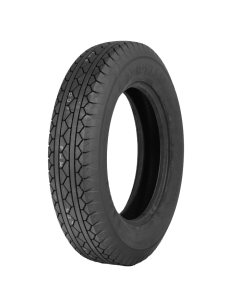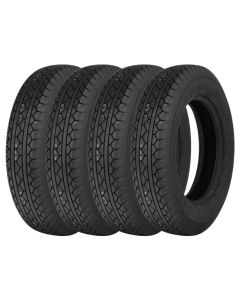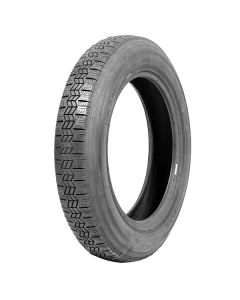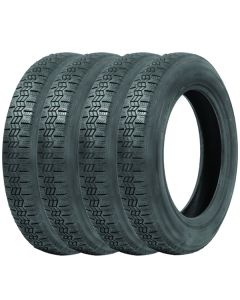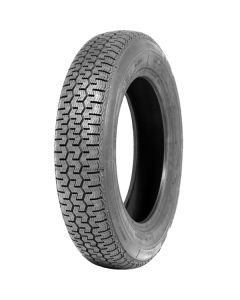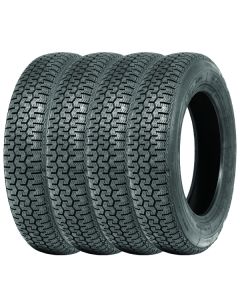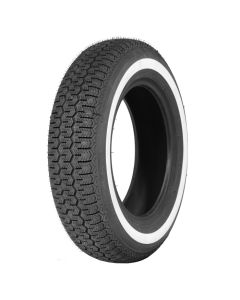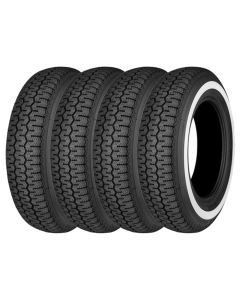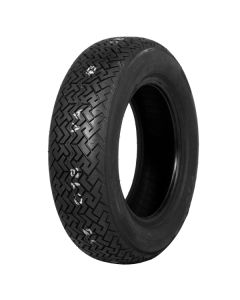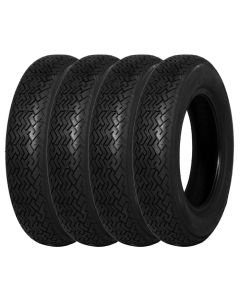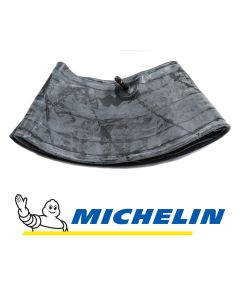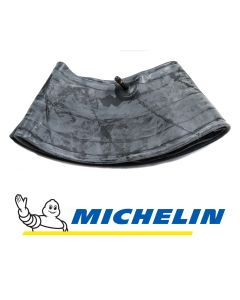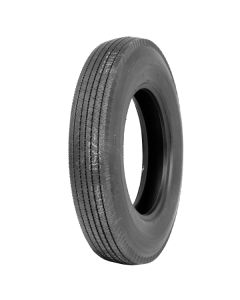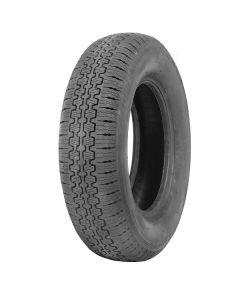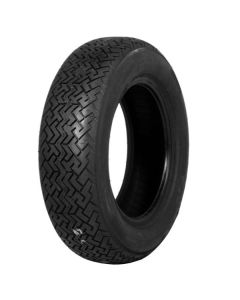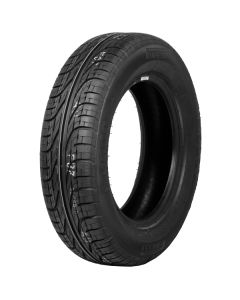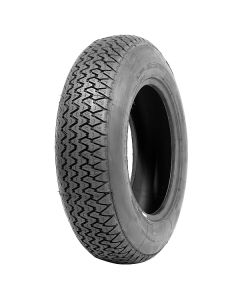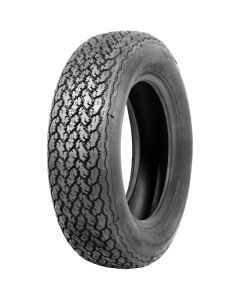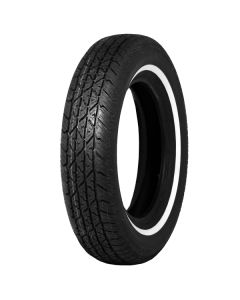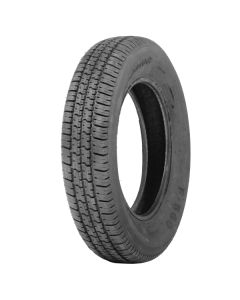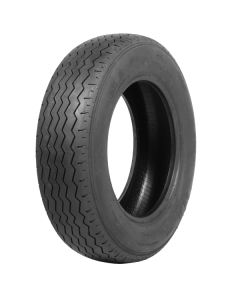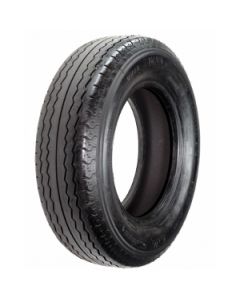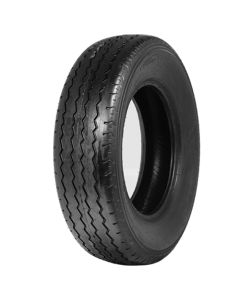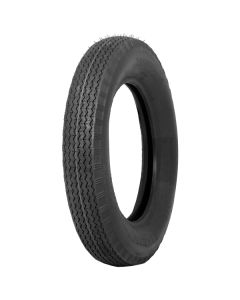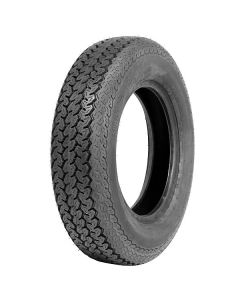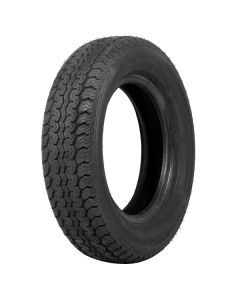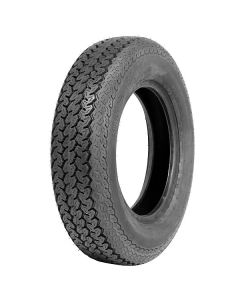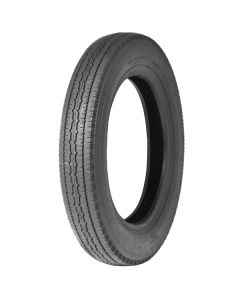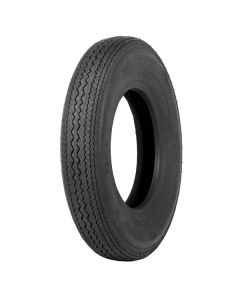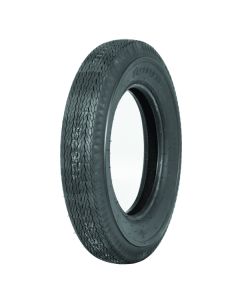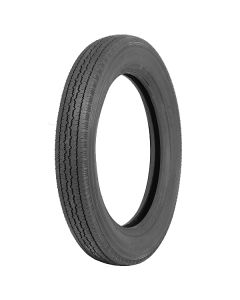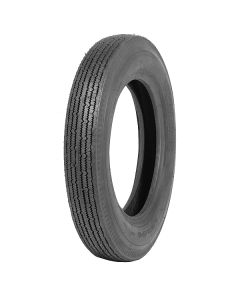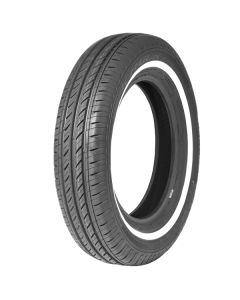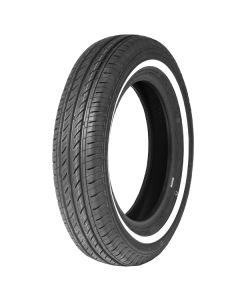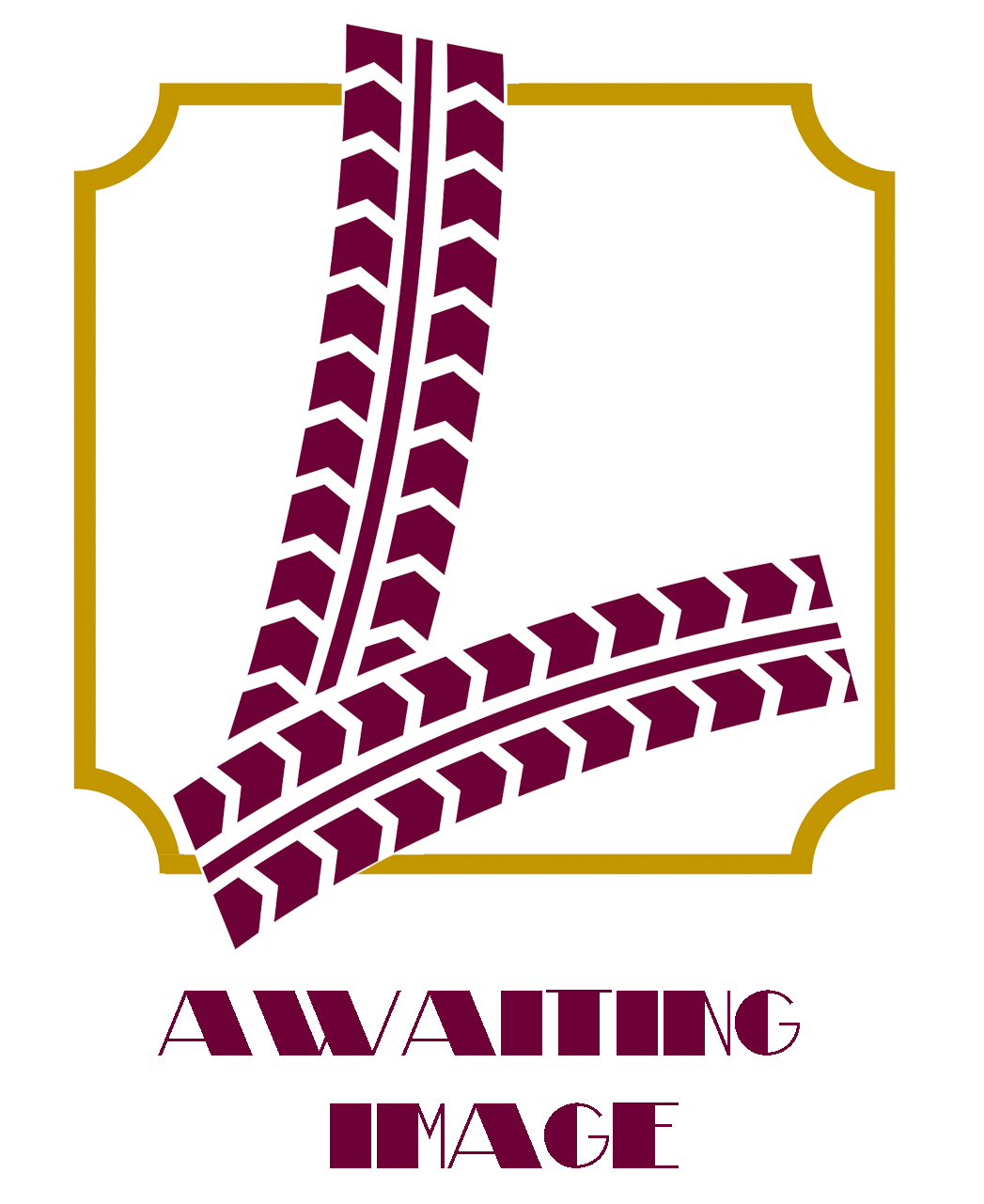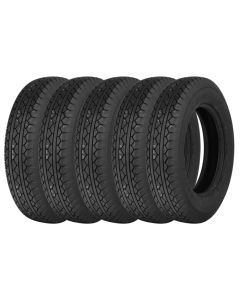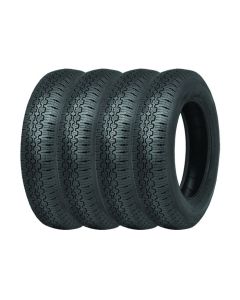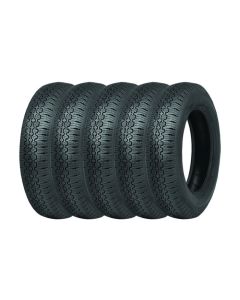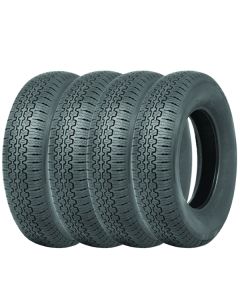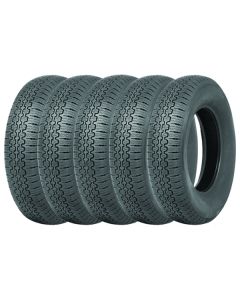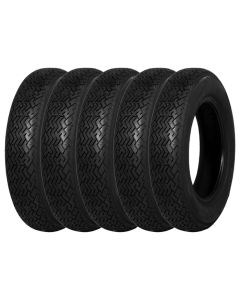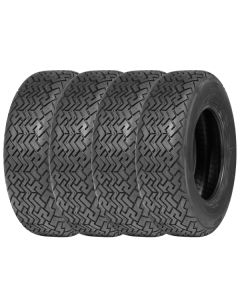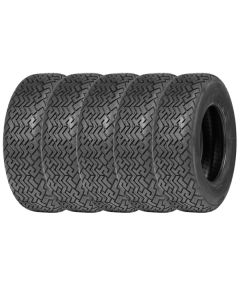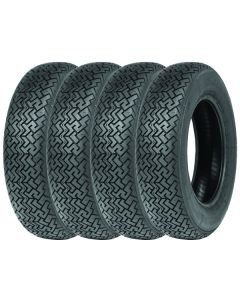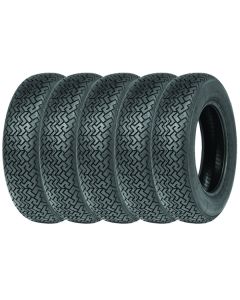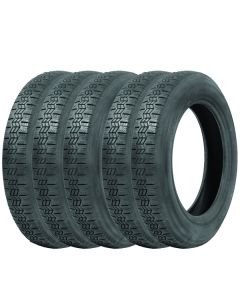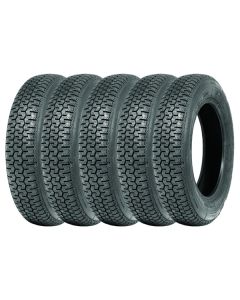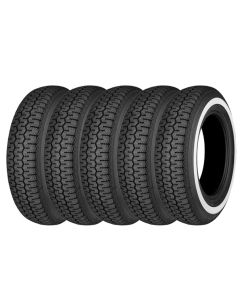Volkswagen Beetle Tyres
Picture - 1948 Volkswagen Beetle Production Line (16" Engelbert Tyres)
Video - Volkswagen Beetle Tyres Explained
Classic VW Beetle Tyres 1938–2003
- Very early VW Beetles fitted 16” wheels and 500 - 16 tyres. Today, the 500/525-16 PIRELLI STELLA BIANCA is the best tyre in this size. Follow the link to see the early Beetle on 16" wheels and tyres.
- The correct tube for these tyres is the Michelin 16E. Please note the 500/525-16 PIRELLI STELLA BIANCA is a tube-type tyre; innertubes must be fitted with these tyres, even if your wheels are tubeless.
- In September-October 1952, Volkswagen switched from 16" wheels and tyres to 4J 15 wheels and 15" tyres.
- The original classic Beetle tyres were 560 - 15 crossply tyres. There isn’t really a perfect crossply tyre for the beetle. We suggest switching to radial tyres.
- The best classic road tyres for a beetle would be 155 TR 15 Michelin X for nimble and light handling.
- The best VW Bug tyre for long legged dual carriageway use is 165 SR 15 Michelin XZX.
- For white wall Beetle tyres, we have 165R15 Michelin XZX Whitewall which is great value for such a quality period tyre.

1303 Super Beetle on 175/70 R 15 PIRELLI CINTURATO CN36 Tyres
- Some of the later model 1303, Super Beetle etc had wider 5.5” wheels and fitted 175/70 R15 tyres. In this size the best Beetle tyre is the 175/70 R 15 PIRELLI CINTURATO CN36.
- The correct tube for these tyres is the Michelin 15E.
- VW Beetle tyre pressure recommendations are very varied, However, 22 psi front and 28 psi rear should be fine for most variants.
- Our period fitment guides suggest that early Beetles of the 40s and 50s fitted tube-type wheels, requiring innertubes, but models from the 60s and early 70s predominantly fitted tubeless wheels, however, it is not uncommon for a later Beetle to be fitted with tube-type wheels. See our Innertube Page to see what qualifies a wheel as tube-type or tubeless.
- See below for some interesting photograps of the Wolfsburg Beetle factory production line from 1953.
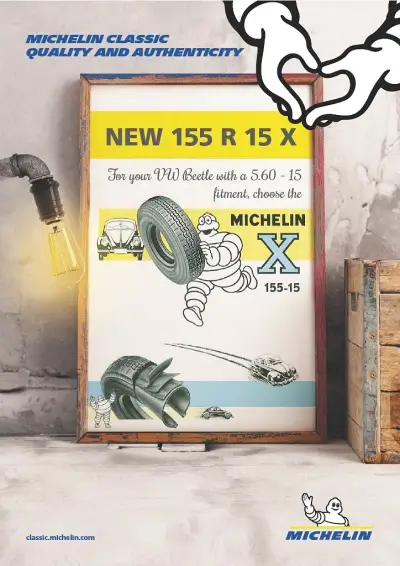
155 TR 15 Michelin X Classic VW Beetle Poster
Classic Beetle Tyres
The VW Beetle from 1952 left the factory fitted with 4" rims and 5.60x15 crossply tyres. Then in 1972, the Beetle fitted 4.5" rims with crossply 6.00L15 with a 78% profile and 155R15 Michelin X as a radial option. The Michelin, which is still available today, is one of the nicest driving tyres for a Beetle.
The best performing Volkswagen Beetle tyres for handling, quality, appearance, and period-correctness would be the 1952 155HR15 PIRELLI CINTURATO ™;, the 165-15 Michelin XAS, or the 155R15 Michelin XAS.
Currently, the most popular tyre for a VW Beetle would be the 165SR15 Michelin XZX. This is because it was a tyre VW offered in period as an option for the Beetle (the 165R15 XZX was original equipment on VW's VW 411, VW 411L, VW 411E, and VW 411 LE models).
The Michelin 165SR15 XZX is such a good option for the VW Bug and it is also incredibly good value for such a high-quality genuine period tyre that was developed to complement the VW Beetle and the extra diameter of the 165 tyre helps the gearing on modern motorways.
The value of this Beetle tyre is dramatically increased by the SPECIAL OFFERS we are currently making for the Sets of 4 165 R15 Michelin XZX and Set of 5 165 R 15 Michelin XZX below.
We now have some exceptional special offers for a set of 4 155TR15 Michelin X & set of 5 155TR15 Michelin X. The great news is that Pirelli also now make the 175/70VR15 Cinturato CN36 that was fitted to the later model cars with the wider 5.5” wheels and was original equipment on some of the 1303 and Super Beetles.
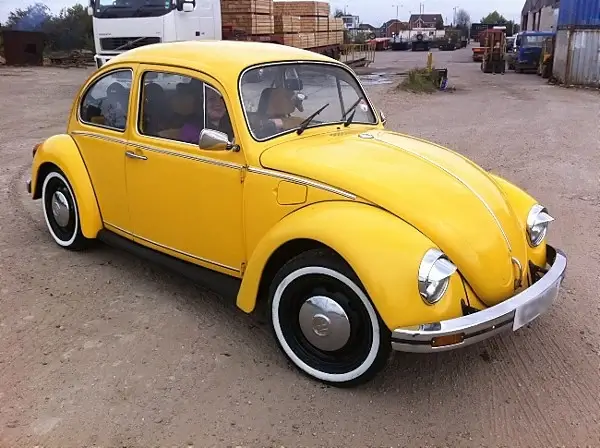
VW Beetle California Look
Volkswagen Beetle Cal Look Tyres
Right back in the day, while Volkswagen were still producing the Beetle, people liked the "Cal Look" where the rear tyres were larger than the front. In this period the Michelin X, ZX or XZX were used. That same look can be achieved by fitting the Michelin 165SR15 XZX on the rear and 145 SR 15 Michelin XZX or 135 SR 15 Michelin ZX on the front. Though the ZX and XZX are different tread patterns, the difference is minimal, and they give the same look.
Whitewall Beetle Tyres
There are other options available for people that want to alter the look of their Beetle, such as with Whitewall tyres:
We are pleased to be able to offer a selection of whitewall tyres for a Beetle. We would suggest that the best VW Beetle tyres are the 165SR15 Michelin XZX. These are perfect for the Volkswagen Beetle owner who wants to embellish their car with a white wall tyre from a proper period quality classic car tyre manufacturer, without being overly expensive. There are other white wall options out there that come and go a little. It might well be worth telephoning us to find out what is best for you on +44 (0) 1302 711 123.
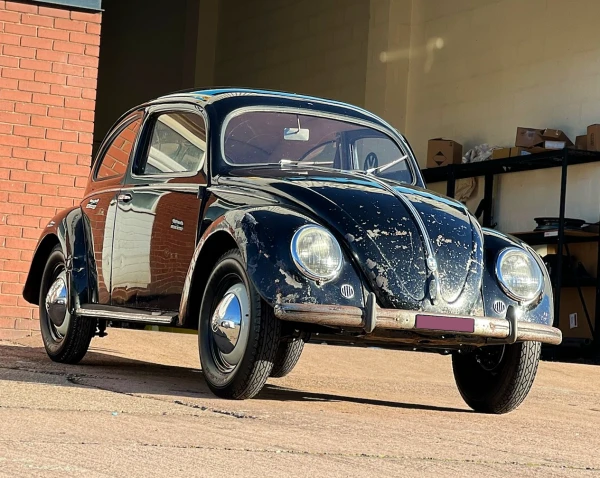
Early Volkswagen Beetle on 500/525-16 PIRELLI STELLA BIANCA Tyres
History of the Volkswagen Beetle
Adolf Hitler was looking for a people's automobile capable of transporting three children and two adults at 60 mph on newly created autobahns in 1934. The automobile was intended to be cheap, around the same price as a motorcycle. Ferdinand Porsche was tasked with creating such a car.
There are several hypotheses as to where the designs came from. Some speculate that Hitler developed the car. Some believe that Joseph Ganz's 1920 design was the original inspiration for the Beetle. Porsche had prepared drawings for the Mercedes-Benz 170H, which influenced the Beetle's design.
Tatra vehicles, particularly the T97 designed by Hans Ledwinka, served as inspiration for the Beetle. Because of the similarities, Tatra filed a lawsuit, which never materialised owing to Germany's invasion of Czechoslovakia. After WWII, the lawsuit was reopened, and Volkswagen was obliged to pay Tatra 3,000,000 Deutsche Marks. As a result, Volkswagen had little money to invest in the development of new Beetle models.
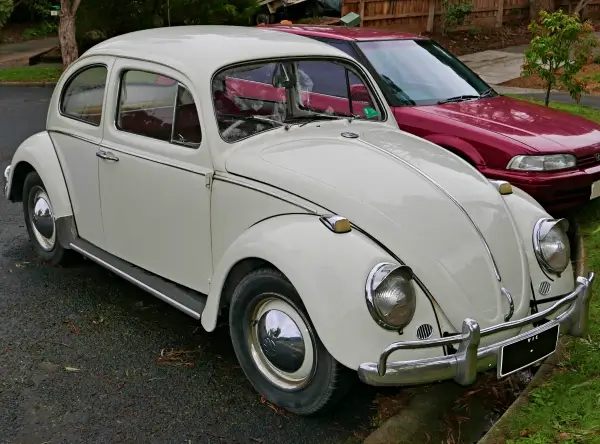
1966 Volkswagen Beetle Type 1
The Volkswagen Type 1 was first formally produced in 1947, but it was known by a different moniker, KDF, short for Kraft Durch Freude, which means 'power by pleasure.' The name Beetle was used in English. In Germany, they were referred to as Kafer, while in France, they were referred to as Coccinelle.
These little bundles of joy had mechanical drum brakes, with earlier versions controlled by wires, a synchromesh-free gearbox, and almost no chrome or frills. The Volkswagen emblem was imprinted on the rims in 1949. The engine was enlarged to 1131 cc and could produce 25 horsepower. Models manufactured after October 1949 have the pleasure of an electric starting motor!
Volkswagen offered two convertible models in 1949. Josef Hebmuller created the two-seater design, known as 14A. Karmann of Osnabruck developed and manufactured the four-seater Type 15 variant. The four-seater was far more popular and remained in production for the next 30 years.
The 14A was beautiful and appealing, but a fire damaged the facility, ending manufacturing and making the Hebmuller extremely uncommon. The rear deck of the two-seaters was essentially identical to the front boot/bonnet. The car's strength, which had been compromised by the removal of the roof, was bolstered with a stronger windshield surround and two Z-section girders situated beneath the floor. After just 696 vehicles were made, the final Hebmuller went off the production line in 1953.
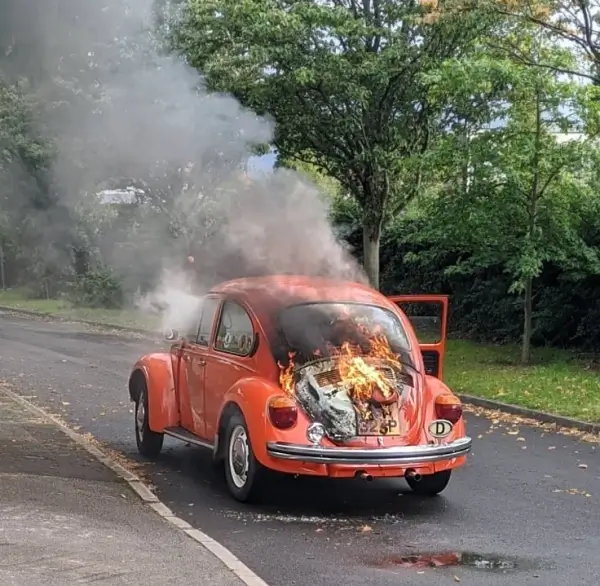
A friend's 1976 1303s Super Beetle experiencing some minor technical issues
The four-seater Karmann cabriolet reigned supreme at a time when utility trumped flair. Karmann has a lengthy history of developing and manufacturing automobiles. The company had been in operation since 1901 and was well-versed in assembly line production as well as the advantages and disadvantages of various metals.
The look and interior of the Beetle were improved during the 1950s. Armrests were added in 1951 but were removed just a few months later. The second and fourth gears were synchronised in 1952, and the mechanical, cable-driven brakes were replaced with hydraulic brakes. A glove compartment was added to the dashboard. The bumper was redesigned in 1955, and electrical direction indicators were introduced. A second tailpipe was installed. The front seats were made broader and could be adjusted to three different seat-back settings.
Tubeless tyres were introduced in 1956. Side-view mirrors became standard on all Beetle variants around the end of 1956. The front window was extended by 17% in 1957, but the rear window was increased by 95%, resulting in the loss of the distinctive "oval" window. There was a new dashboard, rearview mirror, radio, and speaker. The indicators would now switch off on their own. Until then, acceleration has been initiated via a roller pedal. The accelerator pedal replaced the roller pedal this year.
Ivory disc wheels were available in 1958. In 1960, a 34-horsepower engine was introduced. The speedometer was raised from 74 to 87 miles per hour. A windshield washer system was introduced. The colour of the front indicator light has been changed from white to amber. In July of 1961, a fuel gauge was installed.
The seats were converted from wool to synthetic upholstery in 1963. The VW logo on the hubcap was no longer painted. The vehicle's safety was improved once more with the expansion of the indicators. In 1964, there were just minor modifications. The windows, on the other hand, grew in size. The front axle was upgraded in 1965. A defroster vent was installed in the middle of the dashboard, adding another chapter to the continuing drama of incremental changes.
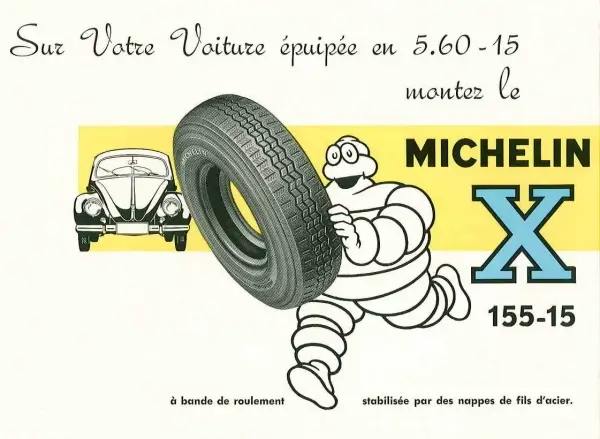
"On Your Car equipped with 5.60-15 - fit the MICHELIN X 155-15 - with tread stabilized by layers of steel wire."
While the manufacture of the "standard" Beetle continued, the Super Beetle debuted in 1971. Produced from 1971 to 1979 (1302s from 1971 to 1972, and 1303s from 1973 onwards), the Super Beetle featured the Macpherson strut front suspension, which necessitated a considerable redesign of the front end. This resulted in a greater turning circle, as well as a lengthened "nose" of the car, which allowed the spare tyre to be relocated from a near vertical to a low horizontal position, thereby doubling the usable baggage space in the front compartment.
Because an electronic pump was not used to deploy windshield washer fluid for windscreen washing, air pressure from the spare tyre was used to pressurise the windscreen washer bottle. 1972 Super Beetles had a slightly wider rear windshield, larger front brakes, and four rows of engine lid vents. Reversing lights were added to the rear lamps. The "four spoke" steering wheel and column were redesigned to be "energy absorbing" for improved collision safety!!!
The installation of a more aerodynamically curved windshield in 1973 pushed it forward and away from the passengers, ostensibly to meet American Department of Transportation safety standards. This made it possible to rework the "padded" dashboard. There was now a 2-speed heating fan, taller rear tyre arches, and bigger rear lights. The alterations to the heater/windscreen wiper housing and curved windscreen necessitated a small redesign of the bonnet, making the 1971 and 1972 Super Beetle bonnets distinct.
The old flat steel bumper mounting brackets were replaced in 1974 with tubular "self restoring energy absorbing" attachments, which functioned as shock absorbers for the bumpers. To increase handling and stability in the case of a tyre blowout, the steering knuckle and, as a result, the lower connecting point of the strut were changed. As a result, struts from pre-74 Super Beetles are incompatible with those from 1974–1979 models.
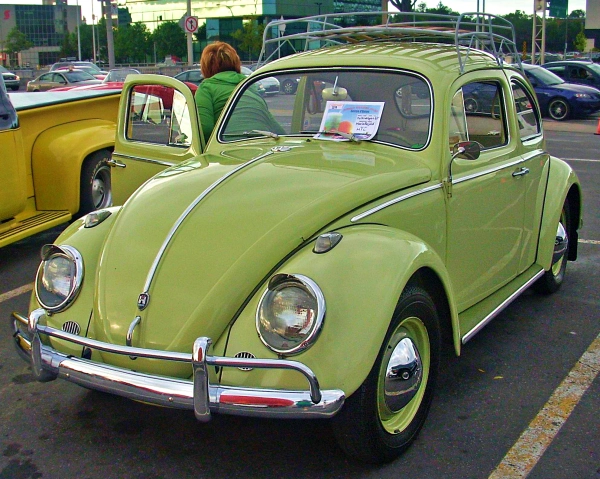
1961 Volkswagen Beetle
Carburettors were replaced with Air Flow Control (AFC) Fuel Injection in American Beetles in 1975, a variant of the more complicated Bosch fuel injection technology used in the Volkswagen Type III. The fuel-injected engine also received a new silencer and the choice of an upstream catalytic converter, necessitating a bulge in the rear apron sheet metal directly under the rear bumper, as well as the replacement of the distinctive dual "pea shooter" pipes with a single offset tailpipe, all of which make the fuel-injected models easily identifiable at a glance. Other improvements included rack and pinion steering instead of the typical worm and roller transmission, as well as a larger number plate lamp housing beneath the engine lid. On European versions, the front indicators were relocated from the top of the mudguards into the bumper bars, heralding the "Euro look" or "cal look" design adopted by Beetle enthusiasts years later.
The hardtop Super Beetle and 1300 were retired in 1976 (though convertibles remained Super Beetles until 1979) and were replaced by an 'enhanced' standard Beetle with a 1600 cc engine, independent rear suspension, and front disc brakes. The "Auto-stick" gearbox was no longer available. From 1976 through 1979, Super Beetles saw no substantial mechanical improvements, simply cosmetic tweaks and new colour options, ranging from the "Champagne Edition" models to the last 1979 "Epiloge Edition", black on black, in homage to the first beetles ever made.
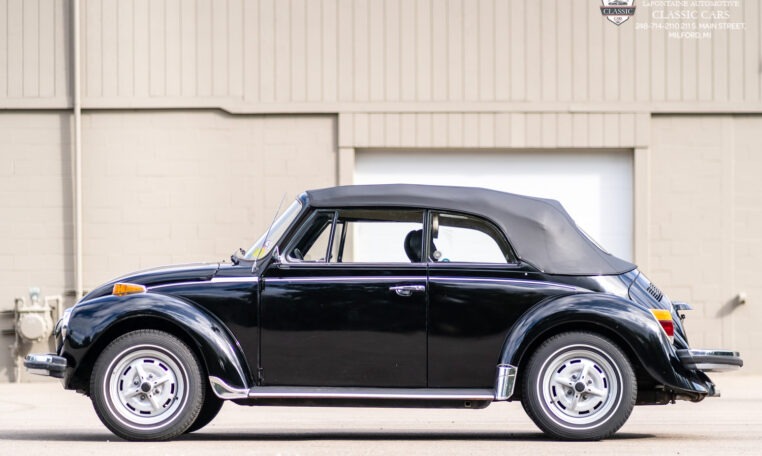
Volkswagen Beetle on Whitewall Tyres
VW Beetle Whitewall Tyres
A: Some of the VW Beetles supplied to the USA came fitted with whitewall Continental or Michelin tyres (1977–1979). Michelin presently makes the 165 R 15 XZX whitewall tyres ideal for the VW Beetle.
A: The Volkswagen Beetle has a variety of nicknames. Often referred to as the 'Bug' in the US and UK, in France it is called the 'Coccinelle'. Other countries bestow animal nicknames; Italians call it the 'Maggiolino' (Little Magpie), in Turkey it is called Tosbağa (Tortoise), and in Indonesia it is dubbed 'Kodok' (Frog).
Volkswagen Beetle Original Wheels

The 1949–1959 VW Beetle Book - 1952 16" to 15" Wheels Transition
Beetle Factory Photographs
Below is a series of photographs taken in 1953 at the Beetle Factory in Wolfsburg.

1953 Wolksburg Beetle Factory - Inspection

1953 Wolksburg Beetle Factory - Wheels and Tyres

1953 Wolksburg Beetle Factory - Fuelling
VW Beetle Borrani Wire Wheels
Borrani wheels are available for your Volkswagen Beetle. As agents for the iconic Ruote Borrani Milano company we are able to supply all wheels from their extensive range.
Wire wheels made by Ruote Borrani Milano are, without doubt, the best wire wheels available. Borrani wheels utilise aluminium rims, steel spokes and steel wheel centres.
If your Borrani wheels require rebuilding, then please contact us at sales@borrani.co.uk
Click the link for Volkswagen Beetle Borrani wheels.
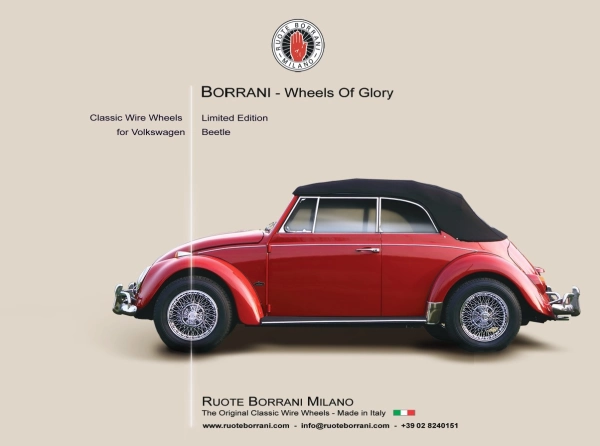
Borrani Volkswagen Beetle Advert
